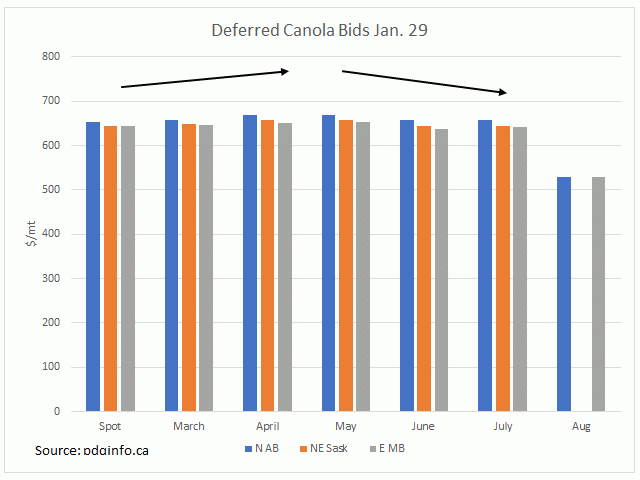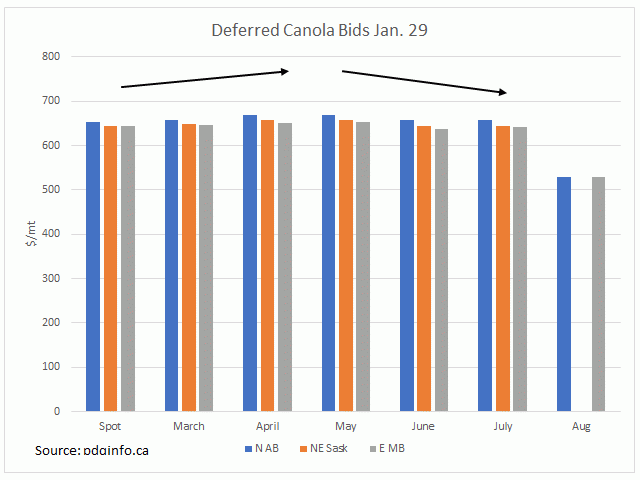Canada Markets
A Look at Canola's Cash Market Signals
Canola futures followed the lead of the soybean oil to start February, with help from the weaker Canadian dollar trade, with all contracts closing higher while consolidating within the previous week's range. March canola closed $23.90/mt higher at $715.50/mt, May closed $9.50/mt higher at $678.50/mt and July ended $5.20/mt higher at $649.90/mt.
Canola's forward curve remains downward sloping, with each contract trading higher than the one that follows through the balance of the 2020-21 crop year, the 2021-22 crop year and beyond. The nearby March contract closed at $715.50/mt on Feb. 1, while the curve ranges lower through to the $515.60/mt shown for Jan. 2023. This is an extremely bullish curve, highlighting the need for front end supplies.
The cash market is signaling rising levels from the spot prices shown by pdqinfo.ca through May, the most challenging month of the crop year due to a shift in producer focus to spring planting. As of Jan. 29 price data for the three regions of the Prairies shown, the bid rises by $15.76/metric ton in northern Alberta from the spot price to the May price, $14.24/mt in northeast Saskatchewan and $8.77/mt in eastern Manitoba.
P[L1] D[0x0] M[300x250] OOP[F] ADUNIT[] T[]
On this particular days price data, the gains realized holding to May were given up (or close to it) by holding grain for delivery in July, while bids for August fall sharply lower in two of the three regions reporting -- northern Alberta and eastern Manitoba.
The futures market volatility remains a concern as noncommercial holding the net-long futures position react to the latest forecasts as they apply to South American production potential and quality, along with signals of demand from China. At the same time, the cash market signals may provide a glimpse into where deliveries are most needed, and potential risks faced when storing grain longer.
The Feb. 5 grain stocks report from Statistics Canada, as of Dec 31, may provide insight as to how tight supplies are as we move into the second half of the crop year and will be watched closely.
**
DTN 360 Poll
This week's poll asks what you think of the change in the U.S. administrations. You can weigh in with your thoughts on this poll located on the lower-right side of your DTN Home Page.
Cliff Jamieson can be reached at cliff.jamieson@dtn.com
Follow him on Twitter @CliffJamieson
(c) Copyright 2021 DTN, LLC. All rights reserved.





Comments
To comment, please Log In or Join our Community .